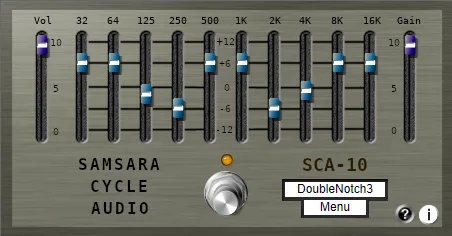In the world of audio processing plugins, there are numerous tools, but some are inspired by classic analog devices that have left a significant mark on the history of sound recording. The MAXBAX plugin from Analog Obsession is one such tool. It’s not just another equalizer, but a fully passive Baxandall EQ, enhanced with modern functionality, making it a versatile tool for a wide range of tasks – from delicate correction to shaping a unique timbre.
What is a Baxandall EQ?
Before diving into the specifics of MAXBAX, it’s worth understanding what a Baxandall EQ is. This type of equalizer, named after its inventor Peter Baxandall, is known for its exceptionally musical and broad curves. Unlike parametric or graphic equalizers, which can have narrow or sharp bands, the Baxandall EQ typically provides a very smooth and natural change in tonal balance. It’s ideally suited for “shelving” correction of low and high frequencies, adding or removing “air” or “body” from the sound without unnatural artifacts. Due to its delicacy, the Baxandall EQ is often used in the final stages of mixing or during mastering, where fine and musical correction is needed.
MAXBAX Features
MAXBAX from Analog Obsession takes this classic concept as a foundation but expands on it, adding additional flexibility and functionality. The key difference in MAXBAX is the presence of an additional mid-frequency band, which is usually absent in classic Baxandall designs. This makes the plugin significantly more versatile, allowing you to not only work with the edges of the frequency spectrum but also influence the vital mid-frequency range, where the main energy of many instruments and vocals is concentrated.
Let’s look at the main controls:
- LOW: This control allows for shelving boost or cut of low frequencies. You can choose one of the fixed frequencies from the range of 20-30-40-60-85-120 Hz. Gain/attenuation is performed with an accuracy of 0.5 dB, which allows you to finely tune the amount of “lows” in your mix. This is perfect for adding warmth to bass instruments or controlling unwanted rumble.
- MID: This is the unique mid-frequency band. It also works in passive mode with fixed frequencies: 0.2-0.4-0.8-2-4-7 kHz. The adjustment step is 0.5 dB. This band allows you to “pull out” or “remove” certain aspects of the mid frequencies, for example, to add presence to vocals, make guitars more transparent, or control the harshness of some instruments.
- HIGH: Like the low-frequency band, this section is responsible for shelving boost or cut of high frequencies. Available fixed frequencies: 9-13-16-20-27-40 kHz. The adjustment step is 0.5 dB. This makes it easy to add “air” and “sparkle” to the mix, make cymbals brighter, or, conversely, delicately remove excessive harshness.
- OUT: This control is responsible for the overall output signal level. It has a range of +/- 6 dB with a step of 0.5 dB, which allows you to compensate for level changes caused by equalization or to use the plugin for subtle gain/attenuation of the entire signal.
- LR/MS: This switch determines the processing mode. You can work either in standard stereo mode (Dual Mono, L/R), or switch to Mid/Side mode (M/S). Mid/Side processing is an extremely powerful tool for mastering and advanced mixing, allowing you to independently equalize the center part of the stereo signal (Mid) and its side part (Side). This opens up opportunities for expanding the stereo base, controlling mono compatibility, and more accurate correction.
- LINK: When this switch is activated, the controls for the left and right channels (or Mid and Side in M/S mode) work synchronously. This is convenient for standard stereo processing, where you need the same settings for both channels.
The fully passive circuitry, emulated in the MAXBAX plugin, is known for its natural response and the absence of phase distortions compared to some active equalizers. This provides a clean and transparent sound even with significant gain. Fixed frequencies and adjustment steps of 0.5 dB contribute to a more musical approach to equalization, encouraging listening and choosing the optimal settings, rather than mindless “twisting” of the knobs.
Where can you apply MAXBAX?
- Mastering: Due to its delicate curves and the ability to work in M/S mode, MAXBAX is ideal for final tonal correction at the mastering stage.
- Bus Processing: Add warmth and “glue” to drum, bass, or vocal buses using the wide and musical equalizer bands.
- Individual Track Processing: Although it’s passive and has fixed frequencies, MAXBAX can be effective for individual instruments, especially where general tonal correction is needed, rather than surgical cutting of problematic frequencies.
- Sound Design: Use its unique character to shape the timbre and add an analog flavor.
MAXBAX from Analog Obsession is a great tool that combines the vintage character of a passive Baxandall EQ with the added flexibility of modernity. Its intuitive interface and high-quality emulation make it a valuable addition to the arsenal of any musician or sound engineer. If you are looking for an equalizer that sounds musical, offers excellent control over low and high frequencies, and also allows you to work with mid frequencies and in M/S mode, be sure to try MAXBAX.



